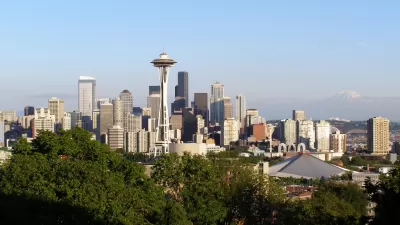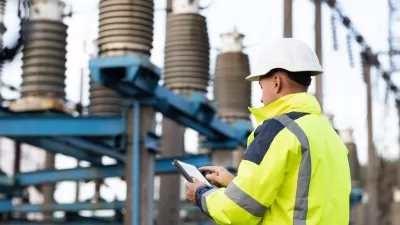Does a smart city have to pursue sustainability goals? Does it have to utilize the internet to involve citizens? Boyd Cohen tries to put some parameters around the discussion of smart cities - a nebulous term that means many things to many people.
As past articles on the subject demonstrate, the definition of a "smart city" can be stretched to include nearly any city doing some form of planning. As he endeavors to compile his annual rankings of smart cities, Cohen attempts to bring some order to the discussion by creating a vehicle to build "consensus around what a smart city is and what the components of a smart city actually are." To achieve this goal, Cohen introduces, "a new rubric for smart cities, that [he calls] the Smart Cities Wheel," which is oriented around six main "smart" categories.
"Most cities can agree that there is real value in having a smart
economy, smart environmental practices, smart governance, smart living,
smart mobility, and smart people," says Cohen. "Within each of these aspirational
goals, I have included three key drivers to achieving the goal. There
are over 100 indicators to help cities track their performance with
specific actions developed for specific needs."
Cohen goes on to explain a typical three-step process for how a city might, "use the Smart Cities Wheel to develop and implement a smart cities strategy."
FULL STORY: What Exactly Is A Smart City?

Americans May Be Stuck — But Why?
Americans are moving a lot less than they once did, and that is a problem. While Yoni Applebaum, in his highly-publicized article Stuck, gets the reasons badly wrong, it's still important to ask: why are we moving so much less than before?

Using Old Oil and Gas Wells for Green Energy Storage
Penn State researchers have found that repurposing abandoned oil and gas wells for geothermal-assisted compressed-air energy storage can boost efficiency, reduce environmental risks, and support clean energy and job transitions.

Placekeeping: Setting a New Precedent for City Planners
How a preservation-based approach to redevelopment and urban design can prevent displacement and honor legacy communities.

San Francisco’s Muni Ridership Grew in 2024
The system saw its highest ridership since before the Covid-19 pandemic, but faces a severe budget shortage in the coming year.

Colorado Lawmakers Move to Protect BRT Funding
In the face of potential federal funding cuts, CDOT leaders reasserted their commitment to planned bus rapid transit projects.

Safe Streets Funding in Jeopardy
The Trump administration is specifically targeting bike infrastructure and other road safety projects in its funding cuts.
Urban Design for Planners 1: Software Tools
This six-course series explores essential urban design concepts using open source software and equips planners with the tools they need to participate fully in the urban design process.
Planning for Universal Design
Learn the tools for implementing Universal Design in planning regulations.
Heyer Gruel & Associates PA
City of Moreno Valley
Institute for Housing and Urban Development Studies (IHS)
City of Grandview
Harvard GSD Executive Education
Salt Lake City
NYU Wagner Graduate School of Public Service
City of Cambridge, Maryland




























